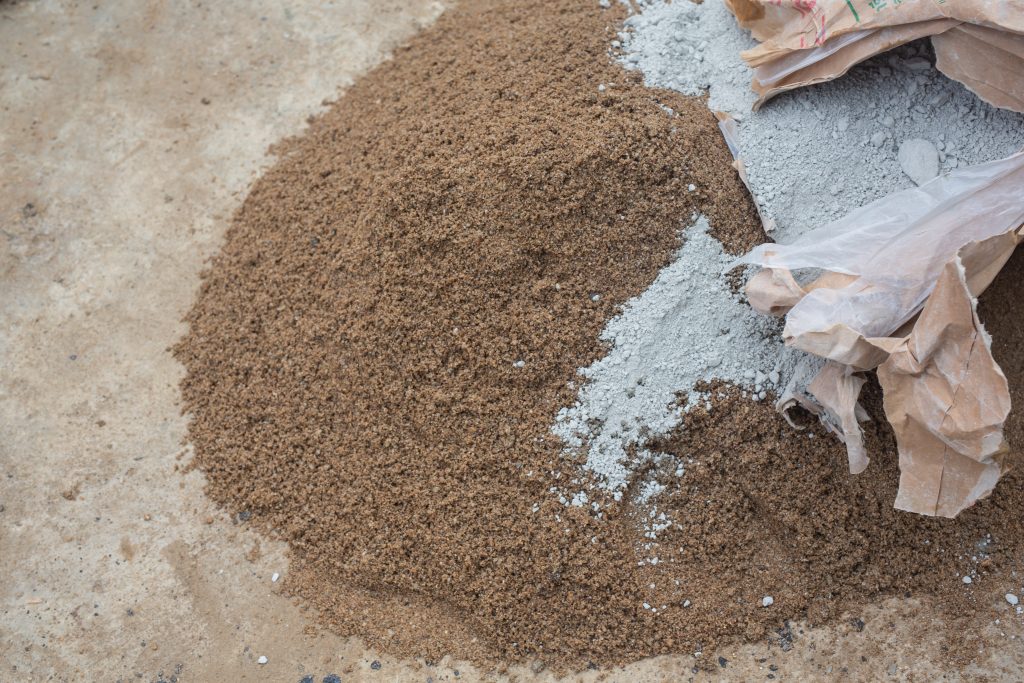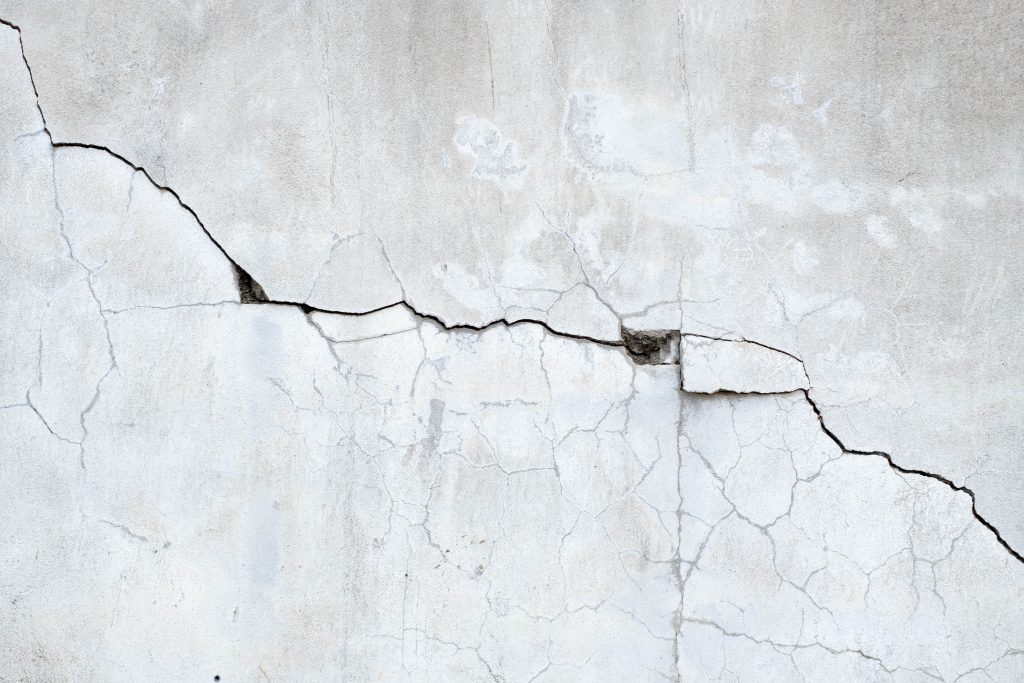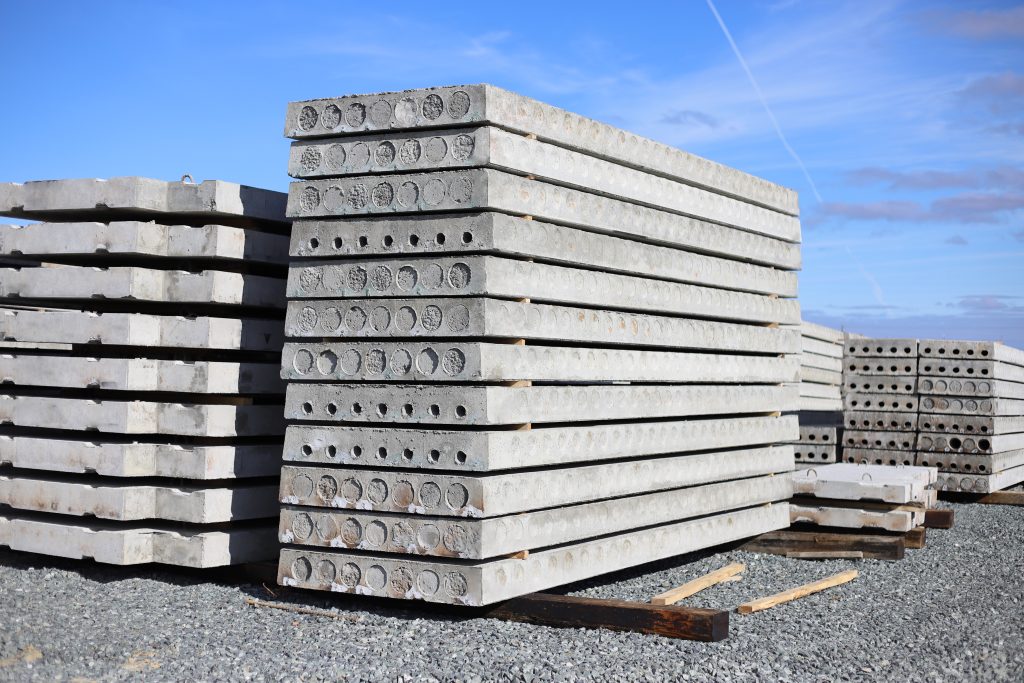The Bureau of Indian Standards (BIS) has laid out specifications for how much cement, sand and aggregates must a particular grade of concrete have. Grade of concrete corresponds to its compressive strength at 28 days of curing. Different grades of concrete are used in different types of construction work. Here, you can get information on M15 concrete ratio, and the various steps outlined by BIS in proportioning the constituents of the concrete mix.
What Is M15 Concrete Mix Ratio?
M15 concrete mix ratio is the proportion of the concrete constituents required to form M15 grade of concrete. Here, ‘M’ stands for mix, i.e., the designated proportion and ‘15’ represents the compressive strength in N/mm2 at 28 days (N/mm2 is Newton per square millimetres pressure unit. It measures the amount of force exerted on an area of 1 sq.mm). The concrete mix ratio for M15 concrete grade is 1:2:4, i.e., 1 part cement, 2 parts sand and 4 parts aggregates.
Concrete mix ratios are typically categorised into nominal, standard, high strength or design mix ratio. M15 is categorised as a nominal mix concrete. A nominal mix ratio is a predefined ratio that provides an approximate estimate of the materials required for a specific grade of concrete. Different mix ratios have different purposes based on their durability requirement.
Key Components Of M15 Concrete Ratio
The key components for M15 ratio of concrete are cement, sand (i.e., fine aggregates) and gravel or stone chips (i.e., coarse aggregates) are in the ratio 1:2:4.
Cement
Cement is the binding agent, which when mixed with water, forms a cement paste that binds the aggregates.
Sand
Sand fills up the spaces between larger particles. It creates a dense, cohesive concrete mix.
Coarse aggregates
Crushed stones, gravel and crushed rock are added to the concrete mix to provide bulk and increase its crushing strength.
Water
Water is an essential component which reacts with cement to cause a chemical reaction called hydration. It also binds other concrete constituents to provide hardening properties to the concrete.
M15 Concrete Mix Ratio Proportioning
Here’s a step-by-step procedure to calculate the concrete mix design for M15 grade as stated in Indian Standard (IS) 10262-2009:
Calculate The Target Mean Strength
To test the characteristic strength of concrete, 100 concrete cubes of 150 mm x 150 mm are tested after 28 days of curing. Out of the 100 cubes, 95 cubes must have the compressive strength of 15 N/mm2. This means 5% of the test results should not fall below the required concrete strength. When you add the value of the concrete’s compressive strength to the standard deviation for that grade as prescribed in IS 10626, you get the target mean compressive strength at 28 days.
Determine The Water-Cement Ratio
The ratio of water and cement in the concrete mix is responsible for providing strength to the final concrete structure. Different cements, aggregate types and other characteristics may produce concrete of different strength even if the water-cement ratio does not change. Water content also determines the workability of concrete. More water increases the workability of the concrete mix, but it may lead to reduction in the concrete’s strength. That is because the mixture becomes fluid and is not able to bind the aggregates efficiently. Low water content in the concrete decreases its workability.
Control Air Content
Air entrainment is necessary in concrete considering the changing temperatures. The approximate amount of entrapped air in normal concrete is as follows:
| Nominal maximum size of aggregates | Entrapped air as a % of concrete volume |
| 10 | 1.5 |
| 20 | 1.0 |
| 40 | 0.8 |
Selection Of Water Content
The water content in concrete is influenced by factors such as required workability, cement, aggregate type, and environmental conditions, among others.
Calculation Of Cement Volume
The cement and cementitious material content per unit volume of concrete may be determined from the quantity of water per unit of concrete volume and the free water-cement ratio.
Calculations For Aggregate Requirements
The volume of aggregates in a concrete mix determines the workability of concrete. For a more workable concrete mixture, the coarse aggregate content may be reduced. Coarse aggregates must conform to IS 383. Next, the ratio of fine aggregates must be calculated by considering the cementitious content, water and chemical admixture.
Make A Trial Batch
You can carry out a trial batch by mixing the proper ingredients in the concrete mix ratio. And you could conduct tests to determine the consistency, workability, and strength of the concrete mix.
Factors Affecting M15 Concrete Mix Ratio
Given below are some of the major factors that affect M15 concrete mix ratio.
Compressive Strength
It is the ability of a material to withstand external forces without deformation or failure.
Exposure Conditions
The weather conditions and working in a well-ventilated area impacts the preparation of M15 concrete mixture.
Workability
The ability to mix, place and shape concrete while construction is called workability.
Cement Quality
Cement is the binding agent in this mix. Hence, it is important to maintain its quality.
Water-Cement Ratio
This should be carefully controlled to ensure proper hydration and strength development.
Admixtures
These are chemical additives added in M15 grade concrete to enhance its properties.
M15 Grade Concrete Applications
This grade mix has numerous applications where there is a requirement of moderate strength. Listed here are a few examples.
- Medium strength applicability such as beams, lintels, flooring and other general construction purposes.
- Pavements or pathways
- Stairs and steps
- Plastering walls and ceilings
- Small scale foundations
Tips For Successful M15 Concrete Mixing
Here are a few tips to follow when mixing concrete:
- The most crucial aspect of preparing a concrete mix is mixing the components in the right proportions.
- It is vital to use weighing scales and measuring boxes instead of estimating or eyeballing quantities.
- The concrete combination must be mixed with water for an adequate amount of time to achieve a uniform and homogeneous mixture.
- Water-cement ratio must be exact to ensure desired workability.
- All ingredients should be clean, well-graded and free from any contaminants or organic matter.
Explore a wide range of cement for various construction projects with JK Cement.
FAQs
What are the different types of concrete mix ratios?
The following are the various concrete mix ratio types:
- Nominal mix: In a nominal mix ratio, the proportions of cement, sand and aggregates for the concrete mix are predefined.
- Design mix ratio: In this type, an engineer determines the proportions of the concrete constituents based on the construction type.
What is the difference between M15 and M50 grade of cement?
The compressive strength of M15 and M50 grade of cement at 28 days of curing is 15 N/mm2 and 50 N/mm2, respectively. M15 is categorised under nominal mix while and is used in construction where strength requirements are minimal. M50 is a type of design mix used in high-strength construction like bridges.














